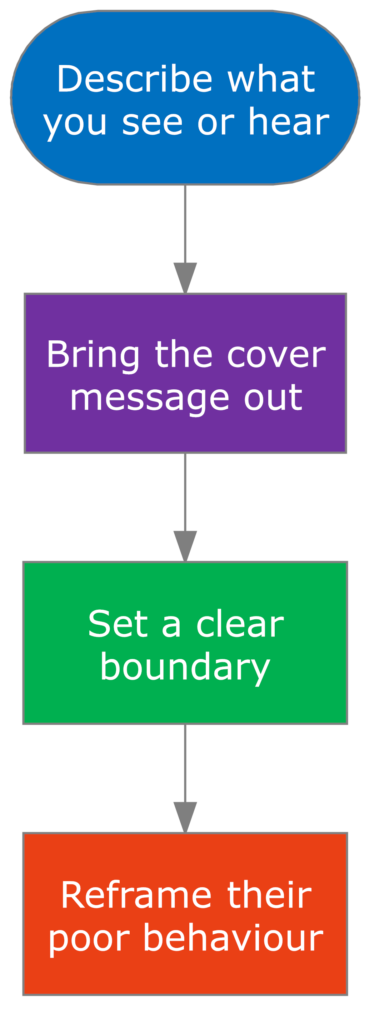Being in conflict involves having a difference of opinion. You can air that difference without causing offence.
There are many situations where you need to express disagreement tactfully. For example, you might need to express concern about an idea promoted by your boss. Your parents might have expectations you can’t meet. Or you might need to keep your partner on-side, whilst telling them your opinion differs from theirs. In these situations, you can use the following process.
Demonstrate that you’ve really listened to the other person. Mentally summarise their main points. Then feed those points back. A good way to start is with the phrase “What you’re saying is…” or “To you, the most important points are…”
Find something to agree with
Using the word ‘agree’ is a great way to reduce resistance to your message. So aim to use this word as often as possible. There is always something you can agree with. You might agree that an issue is important, or that the two of you need to discuss it. This allows you to express agreement and build the relationship.
Connect with ‘and’
There is no point saying “I agree that this issue is important. But you’re coming at it from the wrong angle.” As soon as the other person hears the word ‘but’ they will shut down. Avoid raising their defences. Try building on what they’ve said rather than negating it – by using ‘and’ instead of ‘but.’ For example, you could say “I agree that this issue is important. And I can see we both have different opinions…”
Take ownership with ‘I’
Say “I see things differently” rather than “You’re wrong.” This gets your message across in a palatable format, thus priming the other person to listen.
[convertkit form=5135167]
Seek to resolve
Move into conflict resolution mode by posing a solution focussed question. For example, ask “how can we sort this out?” Then take time to explore everyone’s position before creating an action plan.
Need advice on what to say? Send your question to Eleanor now.

